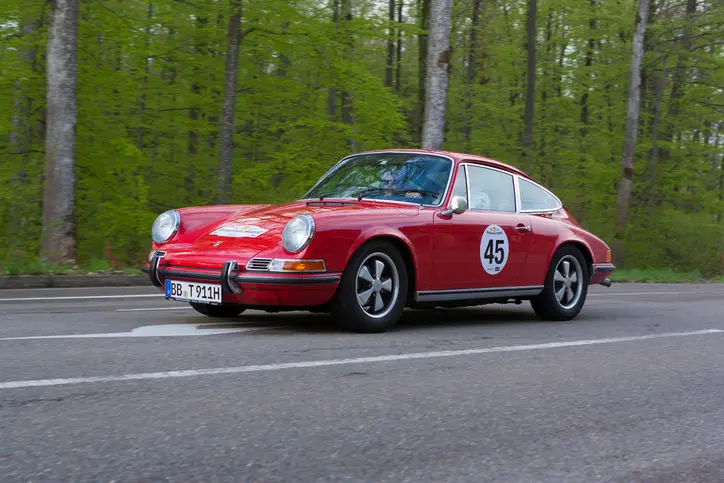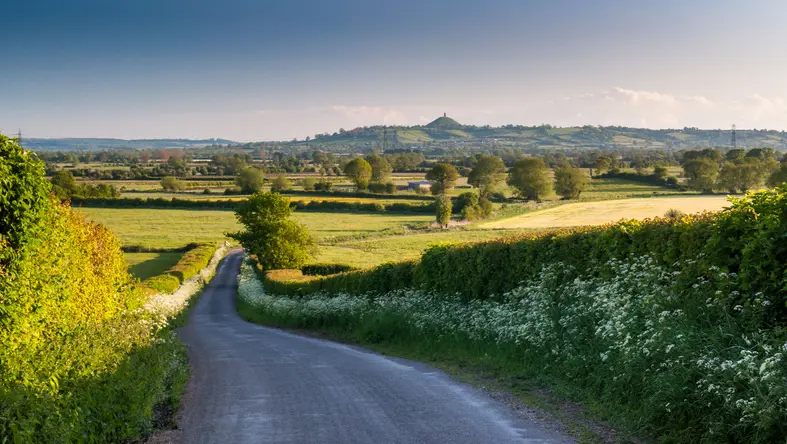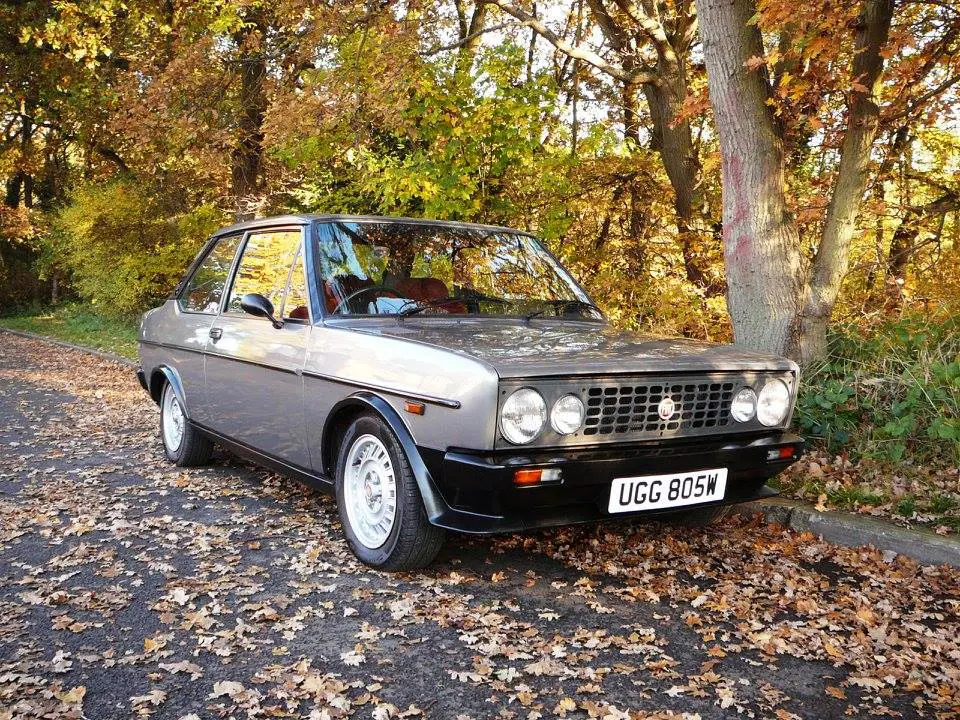Best Alpine drives
22 October 2021
The Alps are home to some of Europe's most dramatic scenery – and many of the winding mountain roads that snake through them make for thrilling, engaging drives.
The scenery is magnificent, yes, but you'll also want to keep your eyes on the twisting, testing road. It goes without saying that insurance for you classic car is a must before considering any European driving trip. But once that’s sorted, you’re in for one of the most thrilling and memorable drives of your life.
Great St Bernard Pass
Switzerland's third highest road pass, climbing up to 2,469 m (8,100 ft), the Great St Bernard Pass links the Swiss town of Martigny with the city of Aosta in Italy's Val d'Aosta. Located right on the border of the two countries, the Great St Bernard follows the ridge between the Alps' two highest peaks, Mont Blanc and Monte Rosa. This really is the Alps proper.
One of the Western Alps' most historic passes, the Great St Bernard bears evidence of use going back to the Bronze Age, and there are some surviving traces of a Roman road. These days, some easier and more manageable routes have superseded it for most travellers, but if you want to experience the Alps at their most breath-taking, the Great St Bernard should definitely be on your list.
Your route will take you past the Great St Bernard Hospice, which is thought to have existed as a place of religious worship, and a refuge for weary travellers, since at least 812 AD. Sometime during the 1600s, the hospice's resident monks began breeding and training their dogs, which (it is said) had been given as gifts by travellers.

Result: the famous St Bernard dog, whose early function was to guard the hospice, but who were later used as rescue animals, heading out into the mountains to find stranded walkers and climbers. The hospice still welcomes visitors to this day.
The Pass is, er, impassable during the winter months because of high snowfall (snow can reach a depth of up to 10 metres in winter) – at this time of year, you'll need to take the Great St Bernard tunnel, built in 1964 to allow travellers to cross the mountains at all times of year. Almost 6km in length, it briefly enjoyed the distinction of being the world's longest road tunnel.
The journey from Martigny to Aosta will take around an hour and a half.
St Gotthard Pass
The easiest way to cross from the German-speaking part of Switzerland to the Italian-speaking region is by using the 10-mile Gotthard Tunnel. Far more picturesque, however (and an option only available at certain times of the year), is the magnificent St Gotthard Pass – another beautiful and challenging mountain road which, like the Great St Bernard above, has largely been superseded by a tunnel.
The good news, though, is that the Gotthard Pass is, in the right season, one of the easier mountain passes to drive, as the road is wide enough for cars to pass each other, and the turns are well spaced.
If you do fancy a bit more adrenaline, however, you can take the turning for the smaller and more challenging mountain pass called the Tremola. This won't be for everyone – a bumpy, cobbled road with a succession of hairpin turns, only accessible from the southern end of the pass, this is a dramatic drive but also not one for anyone liable to car sickness.
Definitely a case for checking the classic car insurance is fully fit for purpose before you set off!
Once you reach the top (whichever route you've taken), make sure you get out of your car and look around: the views over the valley are well worth the ascent. We also love the road sign, in the middle of this empty, elemental landscape, that points to Milan one way, Lucerne and Zurich the other. And don't forget to wrap up warm: you've climbed to 2106 metres (6,909 ft) and it can get cold, even in high summer.
Simplon Pass
Another Pass that crosses the border from Switzerland into Italy, the Simplon Pass is somewhat less vertiginous than other alpine passes, as it's built along the contour of the mountain, aiming for a gentler driving experience rather than a fastest route from A to B.
Like its fellow passes above, however, the Simplon Pass is typically closed for bad weather for a large portion of the year (roughly December to May): at this time of year, you will simply load your car onto the train service that carves its way through the mountain via the Simplon Tunnel. This is also the route taken by the famous Venice-Simplon Orient Express luxury train service.
If you can go when the road is open, however, you should, as it's a wondrous drive: it undulates gently around the mountain, giving up stunning (and quite contrasting) views on both sides: stark, icy mountains on the Swiss side, lush tree-lined valleys on the Italian side.
Take a camera for the drive, as the views are awe-inspiring. At one point you'll cross the Ganter Bridge, Switzerland's second longest bridge, with panoramic views of the Ganter Valley below. The Pass also has its own hospice – the Simplon Hospice, founded in 1800 by order of Napoleon Bonaparte and, once again, run by the resourceful monks of St Bernard.

Furka Pass
Do you remember that iconic scene in the classic Bond film Goldfinger, where – on a beautiful, vertiginous Swiss mountain road – Sean Connery's Bond in his Aston Martin DB5 meets Tilly Masterson (played by Tania Mallet), driving a 1964 Ford Mustang convertible?
Seeking to avenge her sister Jill's death, Tilly is, herself, pursuing the villain in his 1930s Rolls Royce Phantom III Sedance de Ville. Cue a hair-raising chase sequence along a sinuous (and barrier-free) mountain road, among some picture-perfect scenery. That twisting mountain road is the Furka Pass, one of the Swiss Alps' most famous routes.
A look at the map shows the extraordinary loops, hairpin bends and switchbacks that the Pass must make in order to take drivers over the mountain in relative safety. The views all around are arresting, too – glaciers, craggy mountain peaks, and dark slabs of forest. The Pass also has its own train service, which you may see chugging along beside you.
Like the Great St Bernard, the Furka Pass will take around 90 minutes from end to end.
Bernina Pass
You'll probably be familiar with the town at one end of this remote and beautiful Alpine drive. Yes, the northern end of the Bernina Pass, in eastern Switzerland not far from the Austrian border, is the world-famous ski resort of St Moritz. This Swiss town has become one of the world's most desirable skiing resorts, thanks to its impressive range of slopes and 300+ days of sunshine each year.
But back to the Bernina Pass: this one has been in use since Medieval times when it was an important trade route over the otherwise largely impassable Alps.
This is another one where you'll want to take a fair amount of care, as there can be ice and snow on the road for much of the year – but, as ever, the views are stunning. Plan your trip sometime from late spring to early autumn, though, as you are likely to find the pass closed outside these times.
Once again, the route takes you from one linguistic area of Switzerland to another – in this case, from German-speaking St Moritz to Val Poschiavo, a valley in Switzerland's southern, Italian-speaking region. You'll want to take its 34 miles at a steady pace, taking time both to enjoy the views and to drive safely, so we'd allow a couple of hours.
Heading southeast from St Moritz, the Lago Bianco – or 'white lake' – will keep you company for most of the drive, and you'll also be shadowed by the Bernina railway line, Europe's highest mountain crossing railway.
Stelvio Pass
Dubbed ‘the greatest driving road in the world’ by Top Gear’s Jeremy Clarkson, the Stelvio Pass is as near to motoring heaven as it gets in our book.
Built in the early 1800s, it’s the second highest paved road in the Alps and boasts 48 incredible hairpins – a true test of driving skills if you can pull your attention away from the majestic mountains and glaciers for a moment.
If you want to avoid the traffic, avoid the busiest months of July and August where school holiday traffic can make a trip on this great road a bit stop-start. Beware that heavy snowfall has also been known as early as September so be well prepared and make sure your classic car insurance covers you for trips such as this.
It’s a well-travelled route but one that must be on any true petrolhead’s must-drive list.

Driving in Switzerland: rules and tips
There are a few items that are compulsory to have in the car with you when driving in Switzerland. These include a reflective jacket and warning triangle (kept within easy reach – not in the boot), and a first aid kit. The warning triangle must be used in any breakdown or emergency situation.
You should also carry snow chains, as they will be required in certain areas (indicated by road signs), where they must be fitted to at least two wheels. Snow tyres, on the other hand, are not mandatory – but if your car isn't equipped for driving in the snow, and you cause a holdup, you may end up with a fine.
Make sure, too, that your classic auto insurance includes a sufficient period of cover for driving in Europe.
Speed limits (unless indicated otherwise):
Motorways: 120km/h (74mph). Minimum: 80km/h (49mph)
Expressways (semi-motorways): 100km/h (62mph)
Built-up areas: 50km/h (31mph)
Other: 80km/h (49mph)
Serious traffic offences, including speeding, can result in criminal prosecution. Penalties vary from one canton (region) to the next. If you do receive a fine, you may be required to pay on the spot. You are permitted to challenge the fine in writing – but be aware that unpaid fines can result in a prison sentence.
Motorways
You need to display a vignette (sticker) to travel on Switzerland's motorway network: fines are issued for drivers without one. These cost 40 Swiss Francs (£31.50), and are available at service stations, border crossings, post offices, over the phone (+800 1002 0030) and online.
Road conditions
Be aware that, because of its mountainous geography, many of Switzerland's non-urban roads are narrow and winding. Roads may quickly become impassable, even during the summer months: heavy rainfall and snowfall will make this particularly likely. In these conditions, you should bring your speed right down.
Winter driving in Switzerland can be challenging. If you do visit during winter, make sure you bring snow chains and winter tyres, and check the road conditions before setting out. Also bring warm clothing, food, water, and any medicines you require.
If your French, German or Italian is up to it, you can find up-to-the-minute information on road conditions across the country on the Swiss Touring Club website (the language switcher is towards the top right of the screen).
Fuel
You'll find all the major fuel types available across Switzerland. Not all fuel stations will accept UK credit cards, however, so it may be useful to check acceptance with your card issuer before you leave – and to carry Swiss currency as a backup.
Headlights
Cars registered after 1970 must use dipped headlights or daytime running lights during the day. Fines can be issued to drivers not complying.
Special cars deserve specialist classic car insurance
Your classic car is just made for enjoying beautiful, engaging long drives like the Alpine routes we've mentioned above. And, to help enjoy your beloved classic at its best for as long as possible, you should invest in some classic vehicle insurance.
Insurance with Lancaster can include benefits like:
- Car Club member discounts up to 25%
- Choice of repairer
- EU cover up to 90 days
- Two Year Agreed Valuation
- 24-hour claims helpline
- UK-based call centre
Contact us today to find out more.
Policy benefits, features and discounts offered may very between insurance schemes or cover selected and are subject to underwriting criteria. Information contained within this article is accurate at the time of publishing but may be subject to change.
